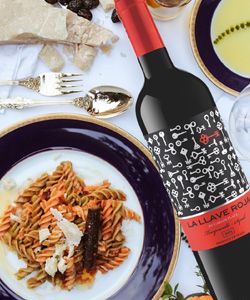What is a still wine and what is the difference with a sparkling wine?
In the first place, a still wine has a low concentration of carbon dioxide (less than 4 g/l at 20°C (68ºF). It shows, therefore, no bubbles. Secondly, its alcohol content shall not be less than 8.5% vol., nor higher than 14,5º, exceptionally 15º.*
All of Carlos Plaza wines are still wines. Know more about them here
If you are in Spain you can get our wines online now with a 20% discount on your first order. Ask us how to get them in your country here: export@bodegascarlosplaza.com
Wine is the beverage resulting exclusively from the partial or complete alcoholic fermentation of fresh grapes, whether crushed or not, or of grape must. During fermentation, yeasts transform sugars present in the juice into ethanol (51,34%) and carbon dioxide (48,16)**, as well as other substances in minimum quantities.
Alcoholic fermentation produces heat. Red wines are fermented at higher temperatures than white wines. Red wines fermenting temperatures range from 20º C to 32ºC (68ºF to 90ºF), while white and rosé wines are fermented at temperatures ranging from 12ºC to 22ºC (54ªF to 72ºF). The must, when hot, produces bubbles. Still wines are treated to remove this CO2, that is to say, when fermenting these wines, the CO2 is allowed to escape, and the bubbles are removed by natural departure.
The remaining quantity of CO2 is so small that cannot be seen or noted in the mouth, but it is necessary and important to add freshness, acidity and primary aromas to the wine.
Sparkling wines carry out a second fermentation in a sealed vessel, that can be either a sealed bottle (bottle fermentation) or a sealed tank (tank fermentation). The CO2 that makes the bubbles in most sparkling wines is a by-product of a second fermentation that has been retained inside the sealed vessel resulting in the typical bubbles of sparkling wines.
The choice of the vessel will depend on the style of the wine desired as well as regional traditions or regulations. They are a number of variants on bottle fermentation (traditional method) but the most famous and well-known are Cava from Spain and Champagne from France. Another popular sparkling wine is Italian Prosecco, produced following the tank-fermentation method. We will go in depth on this in the future.
As mentioned before, the second condition a still wine must meet is that its actual alcohol content shall not be less than 8.5% vol., nor higher that 14,5º.*
Nevertheless, taking into account climate, soil, vine variety, special qualitative factors or traditions specific to certain vineyards, the minimum total alcohol content may be able to be reduced to 7% vol. by legislation particular to the region considered or exceptionally higher. Less than that is not wine, and higher is not still wine, but other kind of wine, such as fortified wine.
We recommend you to try our Carlos Plaza Macabeo Sauvignon Blanc, a delicious dry still white wine. Know more here

Curiosity: the word fermentation come from the latin word fervere which means to boil.
We invite you to subscribe to our Newsletter to get interesting information about wine in general and our wines in particular. We also post in English in our social media and some interesting English videos are coming soon.
*OIV International Code of Oenological Practice.
**Enología práctica, Emile Peynaud


